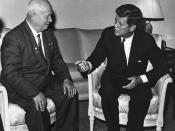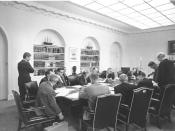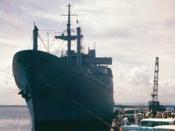The most serious Cold War confrontation between the United States and the USSR that took place in the Third World, occurred in 1962. In the summer of that year, the U.S. government discovered that the Soviets were in the process of deploying nuclear missiles in Communist Cuba. In October, the United States moved to block Soviet ships carrying missiles to Cuba. The resulting standoff was that the world stood seemingly on the brink of ultimate disaster and nuclear war. The crisis ended with Khrushchev surrendering to the demands of U.S. president John F. Kennedy. The Cuban Missile Crisis gave the opportunity for both sides to reflect on the fact that risking nuclear war in pursuit of political objectives was simply too dangerous.
The Cuban Missile Crisis was major confrontation between the United States and the Union of Soviet Socialist Republics (USSR) that occurred in 1962 over the issue of Soviet-supplied missile installations in Cuba.
It was regarded by many, as the world's closest approach to nuclear war; the crisis began when the United States discovered that Cuba had secretly installed Soviet missiles able to carry nuclear weapons. The missiles were capable of hitting targets across most of the United States. The discovery led to a tense standoff of several days as the United States imposed a naval blockade of Cuba and demanded that the USSR remove the missiles.
The crisis was the height of growing tension between the United States and Cuba following the Cuban Revolution of 1959. The revolution ousted Cuba's dictator, Fulgencio Batista and brought to power a government headed by Cuban revolutionary leader Fidel Castro. Fearing that Castro would establish a Communist regime in Cuba, the United States applied economic pressure, and in 1960 implemented a restriction of trade between the United States and Cuba.


